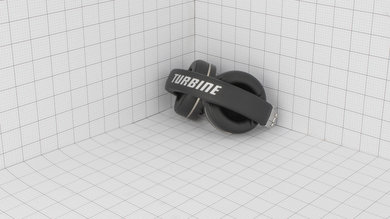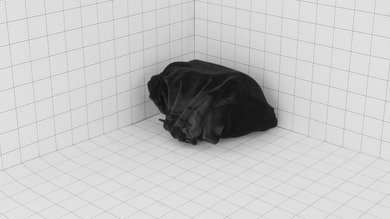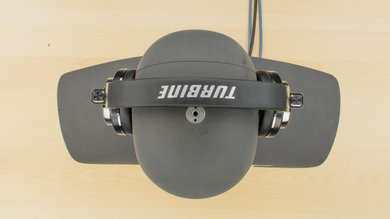The Bluedio T3 Plus are well-built, sturdy wireless headphones for their price range. The Plus model even allows you to play music directly from a micro SD card. Unfortunately, they're poorly designed and uncomfortably tight. They're heavy, have poor audio reproduction and they're not ideal for sports or loud environments.
Our Verdict
The Bluedio T3 Plus are middling for mixed usage. They have a sturdy, durable build for their price, and they don't leak much. However, they also don't block enough noise for loud environments, and they're uncomfortably tight on the head.
- Durable build quality.
- Plays files directly from SD card.
- Poor audio reproduction.
- Poor noise isolation.
- Uncomfortably tight.
The Bluedio T3 Plus are subpar for neutral listening. They have a poor soundstage and an uneven audio reproduction that's too bass-heavy for neutral listeners. They also get quite uncomfortable during long listening sessions.
The Bluedio T3 Plus are mediocre for commute and travel. They don't block enough ambient noise to isolate you from your environment.
The Bluedio T3 Plus are mediocre-at-best for sports. They're wireless and tight on the head. However, their bulky and heavy design makes the headphones sway during physical activities.
The Bluedio T3 Plus are below average for office use. They don't leak much and shouldn't distract anyone around you. However, the poor isolation won't block the ambient noise of a lively office.
Changelog
- Updated Nov 21, 2019: Converted to Test Bench 1.3.1.
- Updated Nov 21, 2019: Converted to Test Bench 1.3.
- Updated Feb 16, 2018: Converted to Test Bench 1.2.
- Updated Sep 28, 2017: The microphone has been tested with our new methodology, as explained here
Check Price
Test Results
The Bluedio T3 Plus have an unusual design. They're not the sleekest-looking headphones, although the metal finish and silver accent give them a somewhat premium feel. They're bulky and protrude at awkward angles when on your head. The circular ear cups and headband are well-padded and contribute to the high-end appeal.
The Bluedio T3 Plus feel uncomfortably tight. The headband is heavily cushioned and sufficiently wide to evenly spread some of the pressure you feel on your head. The ear cups are also well-padded but a bit small. Unfortunately, the clamping force is high enough to cause soreness during long listening sessions. It may reduce with frequent use, but out-of-the-box, they feel excessively tight. They're also quite heavy for their size.
The Bluedio T3 Plus have okay controls. The call/music, track-skipping, and volume buttons are clicky and responsive. However, the button layout is confusing and inefficient. The volume controls, for example, share the same buttons as track skipping. Unintuitively, you have to hold the button to increase the volume, yet a slight tap will skip tracks. As a result, you may accidentally skip a track when trying to adjust the volume.
The Bluedio T3 Plus are somewhat portable thanks to their folding design. They're still moderately large headphones compared to other mid-sized over-ear models. However, when folded they don't take as much space and should fit into most bags. They're not headphones you can comfortably carry around on your person hassle-free, but they have a decently small footprint considering their size and weight.
The Bluedio T3 Plus have a good build quality. The frame is thicker and more robust than the Bluedio T2S/Turbine T2S Wireless. The ear cups are sufficiently dense, if a little plasticky, but shouldn't break from a few falls. The hinges feel a little loose but decently durable thanks to the metal build.
These headphones aren't very stable due to their weight and design. They're tight and won't move too much during casual listening sessions. The wireless design also prevents them from being yanked off your head because the audio cable got hooked by something. However, the ear cups are heavy and protrude quite a bit when on your head. This makes them sway and eventually fall during any kind of intense physical activities, like running or exercising.
Poor isolation. These headphones don't have active noise cancellation and provide no isolation in the bass range. In the mid-range, they achieve an average reduction of about 10dB, and in the treble range a reduction of about 28dB. Both values are below average.
Average leakage. The significant portion of the leakage is between 500Hz and 3kHz which is relatively broad; however, there's a noticeable dip around 1kHz. This dip doesn't seem to be due to the headphones' seal, since it follows the dip in the frequency response.
The Bluedio T3 Plus have a very good battery performance. They deliver 24 hours of continuous playback. They're decent headphones to take on a long road trip or a lengthy flight. Unfortunately, they take longer to charge and don't have any battery-saving features, like an auto-off timer. They can quickly run out of power if you forget to turn them off, but on the upside, they can play audio while charging.
No compatible app.















